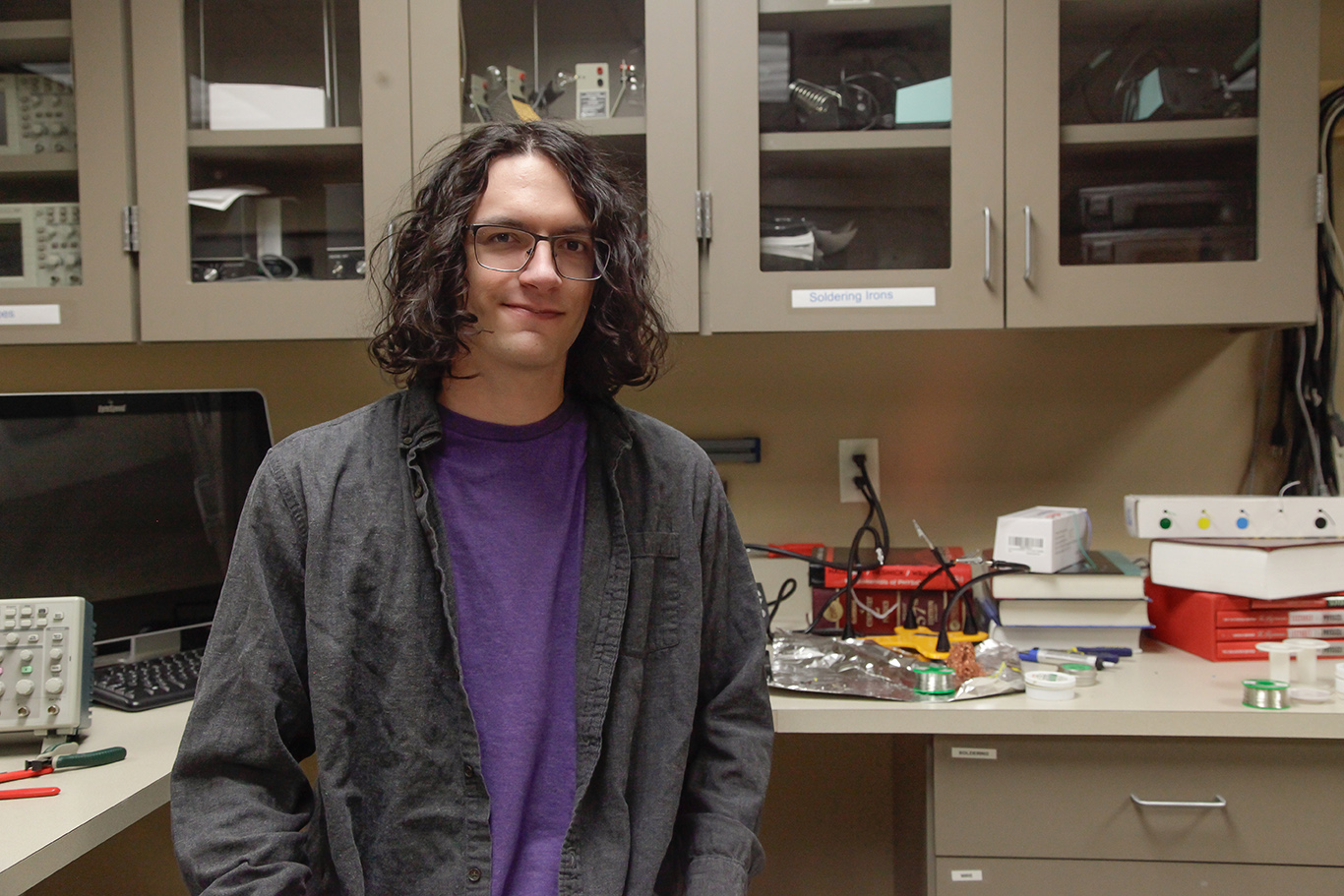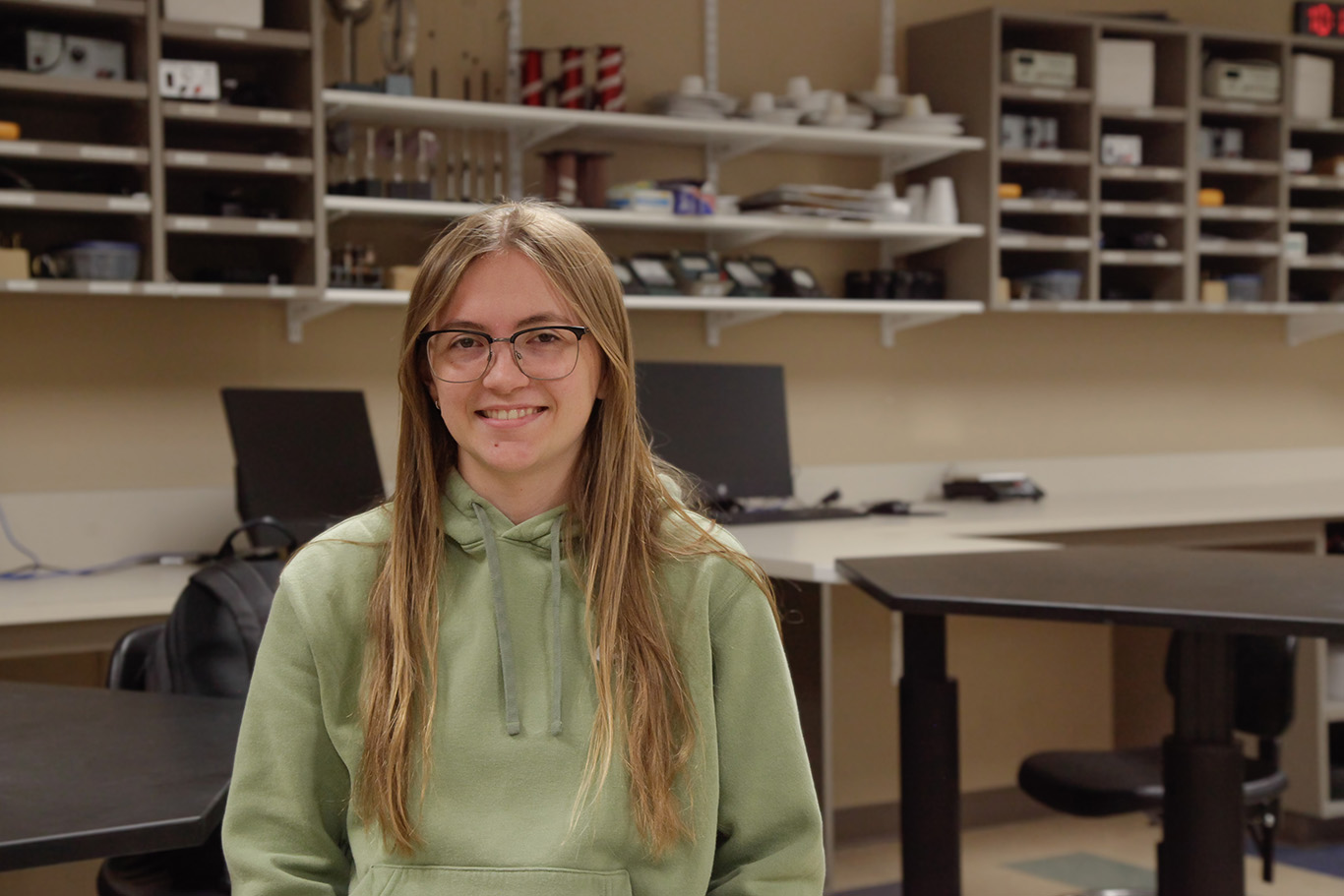Physics Education
A BS in Physics Education will prepare you for a rewarding and challenging teaching career, where you will share your passion for physics with others. As an educator, you will use your creativity to facilitate student learning and understanding of the physical world. Use your knowledge to explore the wonders of the universe and shape the lives and minds of young people and perhaps inspire the next generation of future scientists.
Everyone knows you by name in the Physics and Astronomy Department. Courses average 13 students, ensuring you plenty of individual attention and mentoring from faculty members who are not only master teachers, but also respected scholars in their fields of expertise.
The Physics and Astronomy Department offers you the opportunity to be a Learning Assistant for courses you have already taken. It’s a competitive selection process and a privilege that not only deepens your topic knowledge but provides valuable experience communicating science.
You’ll spend time observing, assisting and teaching in local classrooms for more than 100 hours prior to your student teaching experience, so you’ll be exceptionally prepared to lead your own classroom.
The Physics curriculum teaches and reinforces skills critical to a variety of enterprises that will help you to be successful. Computational and experimental methods are integrated throughout our innovative curriculum to develop your expertise in the core areas of physics. Ample opportunites to work in groups and write and present projects develops teamwork and communication skills.
etween the Physics and Astronomy Department and the School of Teaching and Learning, you’ll discover a variety of experiential learning experiences that will expand your skills. Whether you’re interested in social gathering with your peers or conducting research with your professors, the opportunities to grow are endless.
As the only astrophysics program in the Minnesota State system and the Fargo-Moorhead area, you will enjoy full access to the Paul P. Feder Observatory at the MSUM Regional Science Center. The Observatory houses a 16-inch cassegrain reflecting telescope that is so powerful you can see a candle flame 100 miles away. The Observatory and Science Center are used for undergraduate college instruction, research and public programs.
The heart of MSUM’s Planetarium is an Elumenati digital projector with UniView data visualization software. The result is a multimedia presentation that awes, amazes, entertains and educates viewers of all ages. Not only will you be able to enjoy the many shows offered year-round, you could possibly work in the Planetarium. Students have a hand in creating and presenting shows as well has helping with special events and special topics. Opportunities abound for creative and scientific minds alike.
Teach and observe in local classrooms. Tutor. Attend social gatherings. Be a scientist. Discover your passion in and out of the classroom.
You might also be interested in…
Physics | Chemistry Education | Computer Information Systems | Mathematics | Mathematics Education | Chemistry
MSUM’s physics education program prepares you to share a passion of physics with others. You will develop your mathematical, computational and lab skills necessary to be a successful teacher in a high school or add the middle school science license to open up more career paths. Here is just a sample of high-demand physics education careers that are predicted to experience job growth through this decade.
What are some Common Physics Education Related Careers?
| Career | Job Growth (2021-2031) | Median Pay |
|---|---|---|
| High School Science Teacher | 5% | $62,000 |
| Middle School Science Teacher | 4% | $61,000 |
| Community Educator | 12% | $74,000 |



